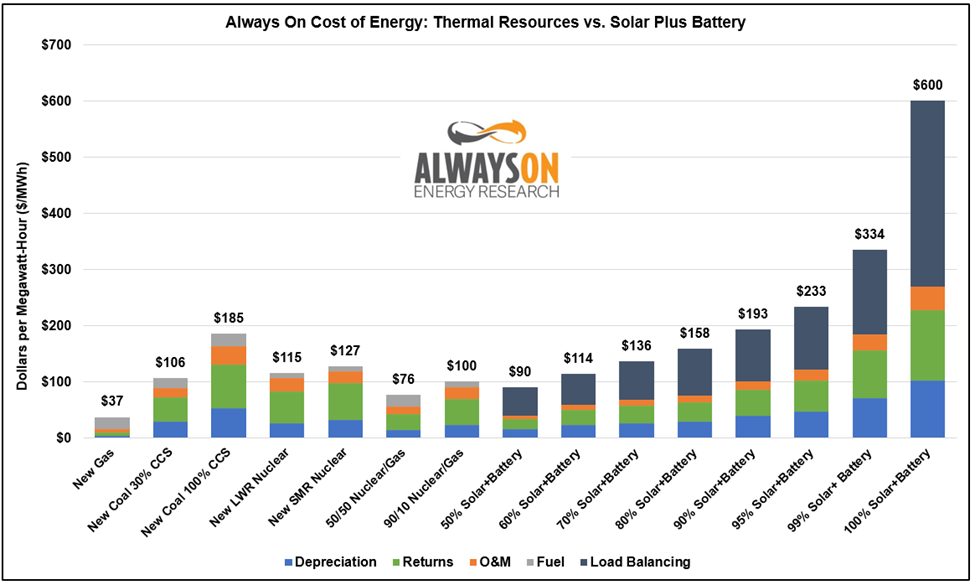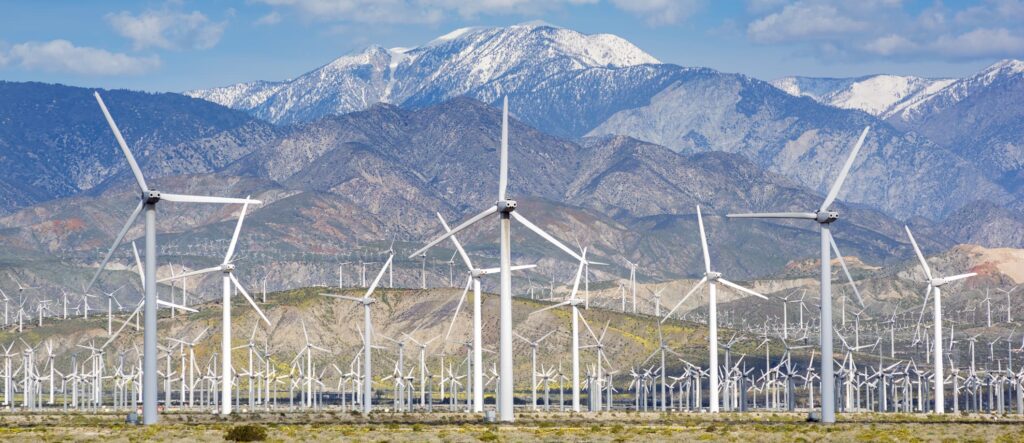Humans have created a long list of myths about the sun. Ancient civilizations from the Aztecs to the Zulus have had names for the solar deity, but all these cults were swept away first by the rise of monotheism then by modern science. All? No. One solar myth persists, or rather seems to have arisen in modernity, namely the climate cult’s belief that solar panels are the cheapest way to generate electricity. Alas, a team of missionaries are even now arriving at the tribal grounds with chapter and verse in hand to show the holdouts that, once you take intermittency into account, solar is by far the most expensive option.
We only recently heard of the “Energy Bad Boys” and can’t remember to whom the hat tip goes. But we like what we’ve seen so far so check them out and sign up. Their July 5 entry is about a new study they wrote for the Utah Department of Energy ranking electricity generation options by cost in the U.S. grid region called ERCOT (the Electric Reliability Council of Texas) which covers much of the southern U.S. and which is, in the Bad Boys’ words, “the darling of the Solar Bros, who are the most vocal about the baseload solar potential.”
What is unique about the EBB study is that they didn’t play the usual game of reporting on the cost of installation, which can be distorted by subsidies and which doesn’t necessarily correspond to actual operating costs. Instead they developed a model to determine the cost of “energy resources providing a constant 1,000 MW of power over a five-year period, accounting for historic hourly fluctuations in wind and solar capacity factors.”
This stipulation about constancy is key to busting the myth of renewables. Solar and wind are intermittent. Sure, while the wind is blowing or the sun is shining they get cheap fuel and deliver power. But the electricity grid can’t shut down every night or every time the wind drops. (And in fact because of the chronic mismatch between when wind and solar produce and when energy is needed, there’s a significant cost of having to pay them to shut down instead; euphemistically called “curtailed production” at least in Ontario.)
Conventional sources like nuclear and fossil can run 24/7 and deliver power when it’s needed. To give solar and wind the same reliability requires adding energy storage, aka batteries, which are monstrously expensive. It also requires extra capacity so that when, say, the sun is shining there is enough solar generation not only to supply the necessary power but also to charge the batteries.
How much extra? No less than 30 times the load requirement. Aaack. What? Yes. Thirty times:
“Meeting this 1,000 MW of demand every hour of the year with only solar and battery storage in ERCOT would require 16,000 MW of solar and 57,600 MWh of battery storage, assuming 14,400 MW of four-hour battery storage, meaning it would require an overbuild of 30.4 to 1 to meet demand. Unsurprisingly, such a massive overbuild will be incredibly expensive. Our modeling suggests that meeting 100 percent of this demand with solar and battery storage would cost $600/MWh, which is far more than any other resource we modeled to meet the 1,000 MW demand requirement.”
In their model, once natural gas starts to appear on the grid, costs begin to fall rapidly. Relying solely on natural gas results in a cost of $37 per MW, meaning solar is 16 times more expensive, once intermittency is properly taken into account. And even having a small amount of gas helps. Relying on solar and battery just 90 percent of the time and using gas for the remainder costs $193 per MW, still a lot but a third of the cost of trying to fill the last ten percent with solar and battery.
The authors also looked at the cost in dollars per megawatt-hour (MWh) of building new energy capacity using various combinations of conventional and renewable sources. The results are fascinating:

New natural gas is cheapest at $37 per MWh. The EBBs don’t price out new coal. But they do look at coal with 30 percent of the CO2 emissions captured for storage ($106) and new coal with 100 percent carbon capture ($185). That price is cheaper than the 90/10 solar/gas combination and, remarkably, yields lower CO2 emissions. Meanwhile a 50/50 nuclear/gas combination is second cheapest at $76 with 50/50 gas+solar/battery next at $90.
Of course models have their limits. But after years of the renewables lobby bamboozling gullible politicians with promises that they can deliver the cheapest energy if only they get the biggest subsidies and no one minds that the energy frequently doesn’t show up, the aptly-named Energy Bad Boys have shed some serious sunlight on the topic. We can only hope the message gets through before we end up broke and in the dark.


